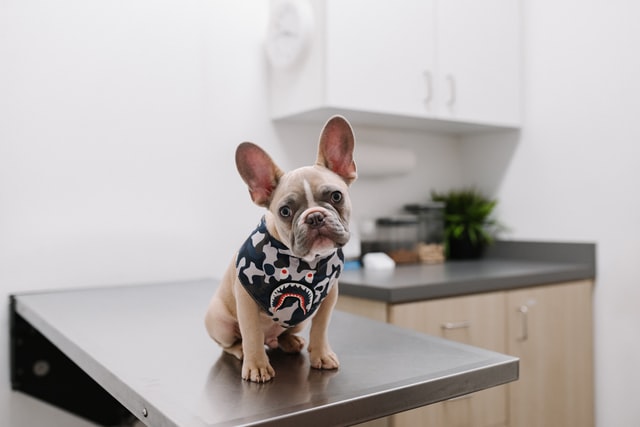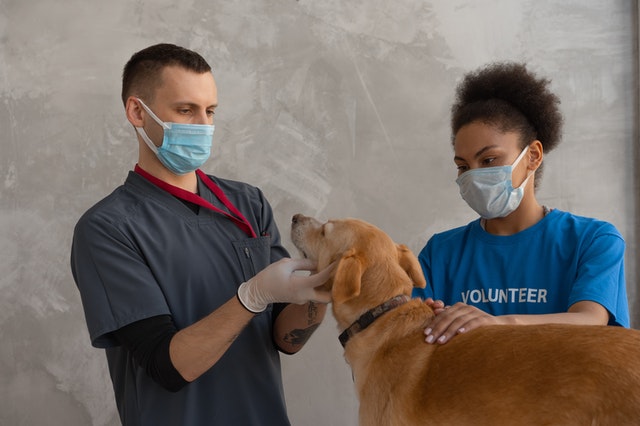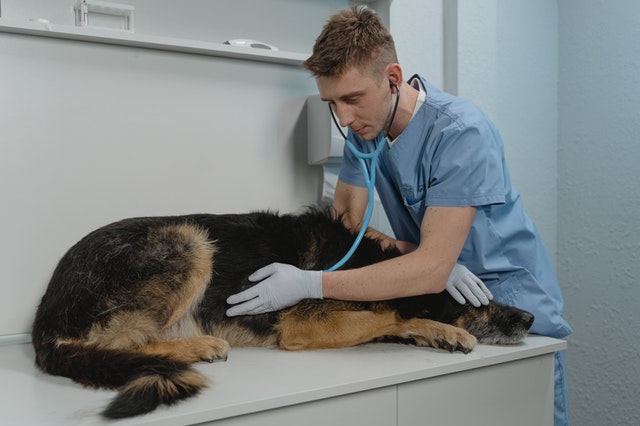Why Is My Dog Limping?
Dogs develop limping conditions when they are struggling with leg injuries, medical illnesses, or health problems. A dog usually cures himself in several hours if they suffer from limping. However, in case of a worse limping condition, it’s advisable to take your dog to the vet for proper treatment.
Like humans develop leg injuries, dogs also suffer from limping quite often. Seeing your beloved dog limping might be scary for you as it’s hard to determine the causes and reasons behind their lameness condition.
Limping in dogs is a common condition but not normal behavior. When dogs limp, they suffer from pain and discomfort, making their walking abnormal. Sometimes, limping can be because of an underlying medical condition or a sudden injury. As an intelligent owner, you should know the causes and treatment methods to comfort your dog if they suffer from limping pain.
- Is Dog Limping An Emergency?
- Different Types Of Limping In Dogs
- Common Signs And Symptoms Of Limping In Dogs
- Why Is My Dog Limping? – 3 Possible Causes
- Is Your Dog Limping On Front Leg?
- Is Your Dog Limping On Back Leg?
- When Should You See The Vet?
- What To Do If Your Dog Is Limping?
- Why My Dog Is Limping But Shows No Sign Of Pain?
- Treatment Options For A Limping Dog
- How To Prevent Limping In Dogs?
Is Dog Limping An Emergency?
Generally speaking, dogs often develop limping conditions in their legs for various reasons and, it should not be considered a major warning or emergency. Most of the time, your dog will self-cure himself in 4-5 hours if they’ve developed a sudden limp without any medical support.
However, if you’re noticing your dog suffering from sheer pain and discomfort due to its limp, you might need to take precautionary measures. If your dog’s limp has worsened up over time, or if the swelling has taken over all his leg, or if they’re suffering from any leg infection, you need to visit your veterinarian for their proper checkup.
Signs Limping In Dogs Is An Emergency:
- Your dog is unable to stand and move
- Your dog is shaking or shivering with extreme pain
- Your dog’s leg is bleeding due to injury or wounds
- Your dog’s leg is swollen or inflamed
- Your dog’s leg bone seems to be fractured
- Your dog is suffering from any illnesses like fever or lethargy
If you see any of the above signs in your dog with a limping condition, it’s better to visit your vet. The vets will adequately examine your dog’s leg and determine the exact causes for the treatment procedure.
Different Types Of Limping In Dogs
According to experts, dog limping is categorized into two types: Gradual Onset Limping and Sudden Limping. Both the categories fall under limping conditions but do have some differentiators. Knowing which kind of limping your dog is struggling with can help you determine if your dog requires any veterinarian assistance.
Gradual Onset Limping
As the name suggests, the limping that develops slowly in dogs is commonly known as Gradual Onset Limping. Gradual limping takes time to develop in dog legs, and it’s hard to find the starting point of the problem. In this type of limping condition, you won’t see your dog limping suddenly after taking a bath or waking up.
Generally, dogs show signs of gradual limping when they’re suffering from any underlying chronic diseases. It can also be due to leg pain or bone cancer, which requires veterinary treatment. That’s why we always advise you to regularly inspect your dog’s health to keep them fit and healthier.
Sudden Limping
Sudden limping hit the dog’s legs on a sudden basis. It can be caused due to recent injury, leg trauma, or fracture. If you’re seeing your dog limping suddenly after a walk or a playtime session, it’s a possibility that they’ve suffered from leg pain or injury, which is making them hard to walk. Again, if you’re seeing your dog’s leg with cuts or wounds, you should contact your vet for their proper leg treatment.
Common Signs And Symptoms Of Limping In Dogs
Sometimes our beloved dogs suffer from limping but do not show any clear indicators to detect that they’re going through pain. As a knowledgeable dog parent, you should know if your dog has a limp in his leg and when he requires vet assistance.
Few common signs and symptoms of limping in dogs:
- Shivering or shaking
- Signs of anxiety
- Dragging leg while walking
- Bleeding in leg
- Licking leg more often
- High fever and lethargy
- Vocalization
- Vomiting
If your dog shows any of the above signs with difficulty walking, it’s a sign that they need support while walking. In that case, you should avoid taking them out for walks or avoid any of their exciting running sessions.
Why Is My Dog Limping? – 3 Possible Causes
You might wonder, if you’re taking extreme care of your pet’s health, how he has developed limping, like what went wrong? Sometimes, dogs limp because of no worrisome reasons like climate changes, twisted legs while sleeping, etc. Still, you need to know about the common causes of limping in your pet. So, here are the 3 causes of limping in dog:
1. Paw Injury
One of the most common reasons behind sudden limping in dogs can be because of a recent paw injury. Paw injuries make their walk uncomfortable and painful, causing them to drag themselves. Wounds, cuts, pests, cracked toenails, frostbite, or burning may lead to leg discomfort in dogs. If you’re also seeing your dog’s leg nail bleeding or swollen due to an injury, you should take preventive measures to treat them.
2. Joint Disease
Some ailments can cause chronic wear and tear on your dog’s joints, eventually leading to limping. Diseases like osteoarthritis, hip dysplasia, elbow dysplasia, and patellar luxation can also induce dog limping. In addition, if your dog has Lyme disease, it can also result in pain in your dog’s leg joints. Your vet is the right person to examine your dog’s joints and reduce their limping pain. Early joint supplements and supports are beneficial to comfort a dog’s limping condition if caused by joint issues.
3. Underlying Medical Problems
Many other medical problems can also result in limping/discomfort in your dog. It can be osteosarcoma, broken bones, fracture, vascular conditions, or swollen inflammatory skin. You may treat your dog’s wound or bleeding if you’re seeing them with your eyes. However, if the problems are underlying and you can’t see the source exactly, it’s best to visit your veterinarian.
Is Your Dog Limping On Front Leg?
Front leg limping is more observed and familiar in dogs than back leg limps. Dogs can suffer from front leg limping because of sudden injuries, bumping up on something while running fast, front toenail bleeding, etc. It’s pretty much hard for dogs to walk or stand if they have a limp in their front legs.
Major Problems That Develop Front Leg Limping In Dogs:
- Shoulder Injury
- Dislocation of Shoulder or Bone Joints
- Elbow Dysplasia
- Inflammation or Swelling Of Front Legs
- Front Leg Paws Injury
Is Your Dog Limping On Back Leg?
Back leg limping is seen in dogs when they’re suffering from any kind of back problem. Dogs with back leg limp often shift their weight to their front legs while walking, and you might see their hip or tail rising. Although with back leg limp, they can walk without disbalance or falling, you should always seek vet consultation if the condition persists for long.
Major Problems That Develop Back Leg Limping In Dogs:
- Hip dysplasia
- Lumbosacral Disease
- Back Legs Muscle Tear
- Inflammation or Swelling Of Back Legs
- Back Leg Paws Injury
When Should You See The Vet?
If you’re seeing your dog struggling with so much leg pain and finding it hard even to get up, you may wonder when to call the vet? However, before dialing or visiting your vet, first, you should examine your dog’s leg closely.
Some sudden limp lasts only for a few hours, and dogs can fix this independently without any medical support. In other cases, if your dog is limping for a few days, the problem might be big and require vet intervention for the treatment. Broken bones or dislocated joints need immediate care and must be treated early. You should carry your dog to the vet clinic if they exhibit these warning signs.
What To Do If Your Dog Is Limping?
If the condition is severe, the only solution you have is to visit your veterinarian. However, if you think the issue does not require any medical emergency, then there are a few things to comfort your dog legs:
Closely Examine Your Dog’s Leg Part
If your dog is allowing you to touch their leg, you should take a closer look at the affected limp area. Usually, you may find their limp swelling due to inflammation and pain. Try to touch that area gently and look for cuts, wounds, or bruises. Also, see if their paw or toenails are bleeding or not. Clean the wounds and apply some ointment or coconut oil to soothe their injury.
If You See Your Dog’s Leg Swelling
When dogs limp for more than 12-24 hours, their legs usually swell up due to bruises and pain. If the affected area has turned red or pink, it’s essential to see your vet to ease their pain. Sometimes, washing the affected area with lukewarm water can also comfort their pain. You can also apply ice cubes wrapped in a towel to your dog’s leg, which will help reduce the inflammation and swelling.
Let Your Dog Rest With No Major Movements
Your dog is already suffering from a lot of pain and a bruised leg, and you don’t want to worsen their condition. So, it’s better to avoid them taking any walks, jogging/running sessions, climbing stairs, jumping, etc. All these activities will worsen their affected area, and they may also bleed. Try to keep them in a silent room with no nuisance and comfortable bedding. Examine the situation after 24-48 hours, and if they’re still limping after ample rest, you should consider talking to your vet.
Why My Dog Is Limping But Shows No Sign Of Pain?
Sometimes you will see your dog limping but not showing any sign of discomfort or pain. It’s not common for dogs to limp without any physical pain. However, sometimes dog limp when they’ve just woken up and cannot use their leg correctly due to wrong sleeping posture at night. Few dogs limp or drag themselves out of boredom, and thankfully that behavior doesn’t last for too long. It’s advisable to consult your vet if you see limping too often in your dog, even if you think they’re not in pain.
Treatment Options For A Limping Dog
If your dog is limping and exhibiting signs of difficulty walking, you need not to worry much. Fortunately, there are proper treatment methods to comfort a limping dog. Dog limping treatment depends on the causes and the affected part. In most cases, adequate rest and medication are enough to treat dogs’ limping.
In cases where the problem is significant, appropriate treatment is required to cure their affected area. Your veterinarian may do a diagnosis and other checks to examine the correct cause of limping. It’s crucial to safely take your dog to the vet without hurting its leg. After the inspection, the vet will suggest you the right treatment options to treat your dog’s limping condition.
You must not panic by seeing the severe condition of your dog. You and your vet will work jointly and formulate a medication strategy that will soon comfort your dog’s limping condition.
How To Prevent Limping In Dogs?
Once you’ve treated the limp condition in your dog by yourself or with medical support, you should know the precautionary measures to prevent them from futuristic leg injuries. There are many things that can minimize the chances of your dog acquiring a limp. Here are 5 ways to protect and prevent your dog from limping:
1. Manage Your Dog’s Weight Regularly
Setting your pup on a weight management plan decreases the probability of developing a limp from diseases like arthritis. Measure your dog’s diet, nutrition, and meals, and see if they’re not getting too fatter or thinner. An overweight dog is more likely to develop a limp when compared to a fitter dog.
2. Integrate Joint Supplements
Joint supplements work marvelously to boost the health of your dog’s joints. They can delay or hinder the advancement of arthritis and manage the pain and inflammation induced by heavy running or jumping. Many owners use joint supplements to prevent paw injuries in their senior dogs.
3. Provide Regular Workouts
No one can deny the benefits of exercise and workouts in humans and animals. A regular workout can decrease your dog’s chances of developing a limp, as it helps relieve muscle pain, tendons, and ligament disorders. Exercise also helps keep your dog at healthy weight levels and make their paws and joints strong.
4. Know More About Your Breed
Unfortunately, some dogs are more prone to the diseases that push a dog to limp, like hip dysplasia and luxating patella. The main reasons can be genetics and hereditary. So, it’s better to start knowing about your dog’s health, strength, behavior, which will help you understand their tolerance levels. For instance, some dogs can run for 30 mins straight, while few don’t even cover a short distance in a single run. So, knowing your dog’s strengths and weaknesses will help you manage their health effectively.
5. Watch Their Playtime Sessions
Dogs are just like kids, and kids often get themselves into trouble while playing. It’s important to closely watch your dog’s behavior and movements while they enjoy playing. For example, if they’re going on a hike, see how they’re climbing it, are they taking the easy path, or they’re stepping the stones too often. Hard surfaces can be challenging for a dog’s joints and may induce pain and limping.
Final Thoughts
Limping in dogs can be because of many reasons, such as chronic muscle strain, joint pain, or ligament dislocation. It also matters which of your dog’s legs are affected and where they’re feeling the pain most. In many cases, your dog treats themselves independently, and limping lasts for a few hours only.
However, if you think your dog’s limping condition is problematic, it’s always recommended to consult your veterinarian for treatment options. After examining your pet, the vet will diagnose the causes that are hurting your dog’s leg. After the treatment, dogs quickly start walking and running freely without any pain.
The form you have selected does not exist.





